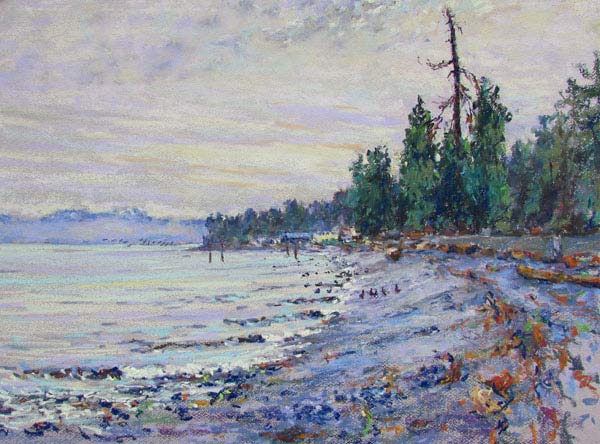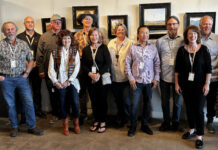– Bob Bahr reporting, Editor PleinAir Today –
Dan F. Gray paints the annual rhythms of wildlife and the seasons on his end of Vancouver Island in British Columbia, Canada, and he feels that this is the best calling for an artist — to paint his or her world.
Lead Image: “Brant on the Beach (Qualicum Beach),” by Dan F. Gray, 2015, pastel, 18 x 24 in.
“I think it is important that some artists stay and live in the same area and say something about that area,” Gray says. “The longer you stay, the more insightful the art can be, and should be. It’s great to travel, and paint other places. Tuscany is enjoyable. But these are the paintings of mine that are more important, the ones that I’m glad I’ll leave behind — the paintings of here.”
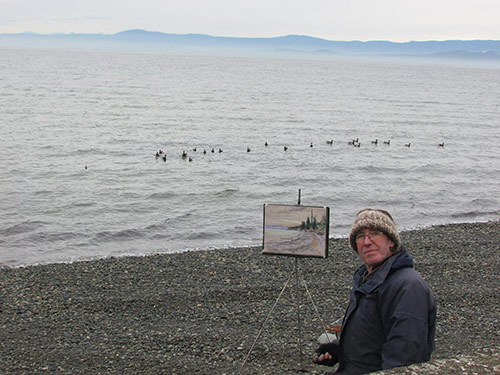
What is “here” for Gray? For one thing, it is ideally a day that is gray. The artist explains it like this: For an exhibition he had in New York City, Gray looked at all of his recent work, and after he picked his favorites, he discovered that they were all painted in January and February. Gray likes the winter on Vancouver Island, and he loves it when the Pacific black brant arrive in great numbers to fatten up on eel-grass, and the herring release millions upon millions of eggs into the shallow waters of the bays, drawing scads of hungry gulls — and bald eagles eager to feed on fish and fowl.
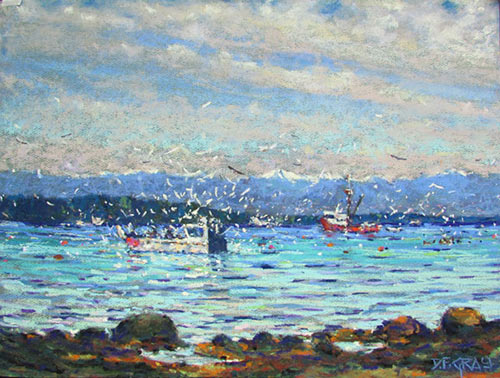
“It’s like a circus,” says Gray. “The brant — a type of goose — appear like smoke in the air and feed along the shore. If I am calm while working, they come quite close, talking to each other. Along with the brant we have a herring spawn, when the sea turns turquoise as the females release their milt. And the banquet begins, with some 20,000 or so gulls, thousands of diving ducks, hundreds of bald eagles, sea lions that come so close you can smell their fish breath, and further out, orcas, gray whales, and fishing boats. When the herring spawns, the spotter planes arrive, and the boats hurry to the spawn. It is a fantastic sight.”
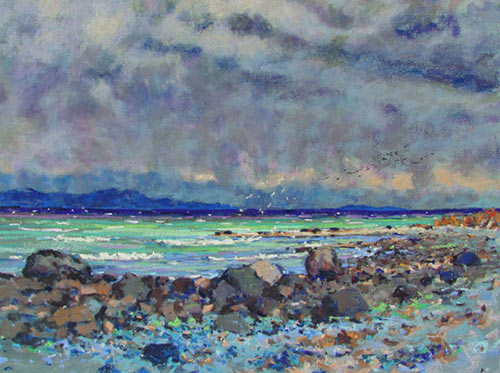
The eggs from the herring are mostly cured and exported to Japan, where they are a delicacy. The bodies of the herring are used as fertilizer or as fish food or meal for other animals. In the water, the spawn fertilizes the water. Small fish eat the eggs, bigger fish eat the smaller fish, and the food chain is nourished, all the way up. Gray and his wife, an avid birder and an advocate for the local wildlife, are attuned to all of these cycles.
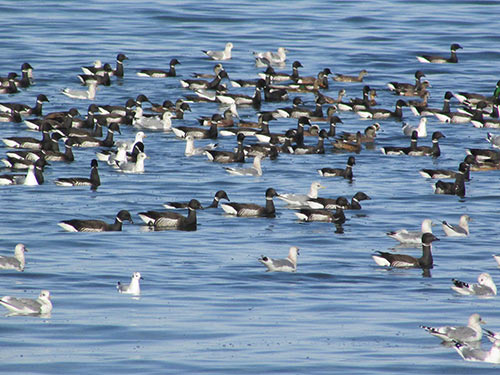
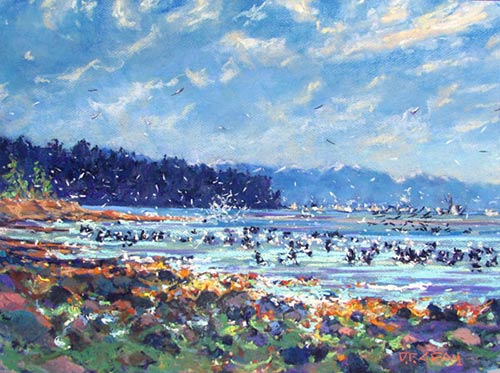
These transitional days of March are described by Gray as “exciting.” He deals with the dominating sun, and focuses on what the sea has brought to the beach over the winter — green seaweed, bright orange driftwood fragmented from red cedar and fir. “The driftwood is bleached out by the end of summer, but right now, it’s very fresh,” says Gray. “I am the only one out there on overcast days — the others want the ‘nice’ sunny days. The wind is my big enemy. I like big panels, and I like to work on them at eye level. The first thing I do is weigh my easel down, because the minute I walk away, it blows over.”

Gray literally paints the big picture. He does not paint portraits of individual brant or gulls or eagles. He paints the environment, with wildlife and weather acting within it. “There is a story there,” he says. “It’s like painting an abandoned car. It’s not about the chrome. It’s about why the car is there.” Gray is sure why he is there, on a beach on Vancouver Island, painting. “When I am standing on our sand, I know it’s where I belong, and I paint. It’s what I do. I belong working, and that’s really where I am alive, and everything is secondary, just maintenance. I’m alive again, it’s spring — I’m just happy to be alive, one more spring. I’ve made a living at painting, but I’m not a hero of painting. I’m not at the top of the art world in Canada. But I’m here.”
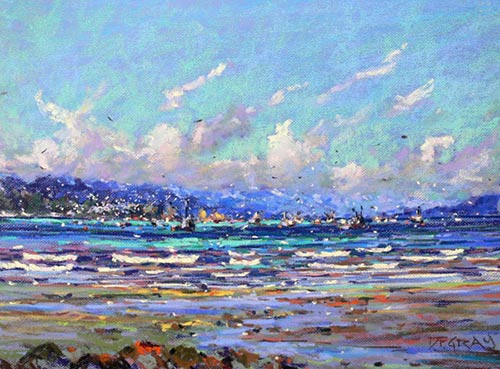
By mid-April, the brant will have left. After the herring leave, the next natural phenomenon occurs. “Then comes the plainfin midshipman fish,” says Gray. “They come up from the depths of the strait and lay their eggs in rocky tidepools, and stay there, guarding their eggs. At night, they sing.”
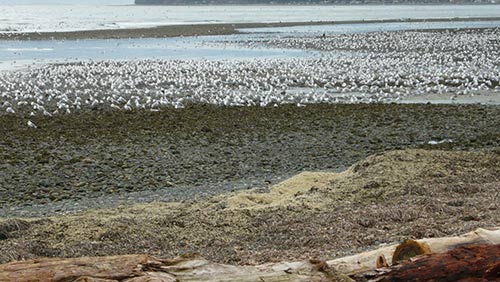
Google it. These fish do actually vocalize. But you have to stay in one place long enough to hear it.

